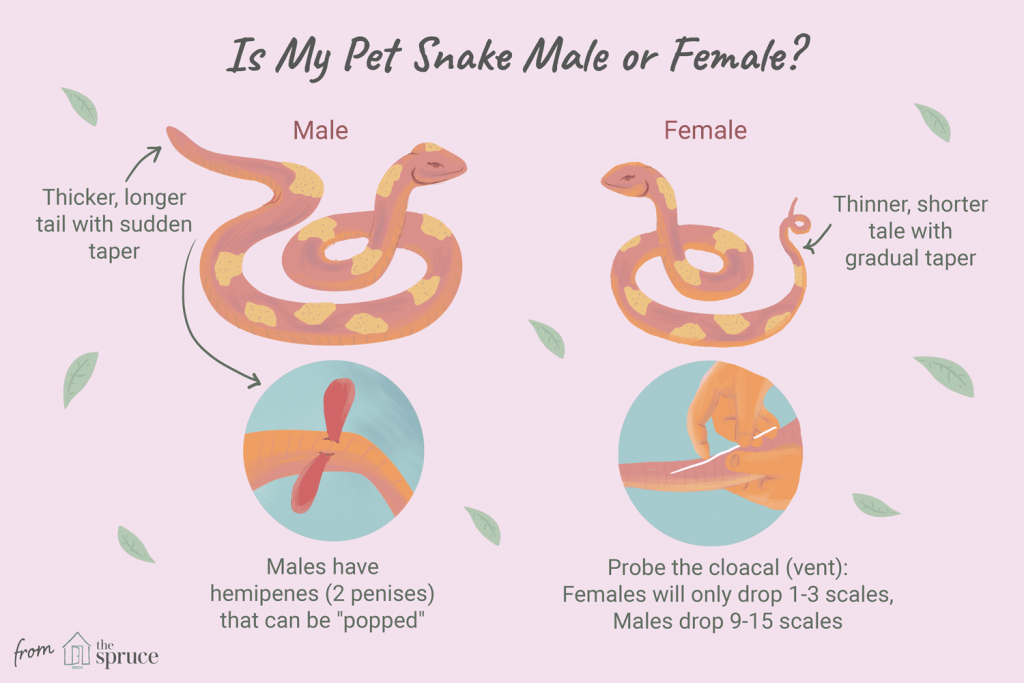If you’re a snake owner, you may be wondering how to tell if your snake is male or female. Knowing the gender of your snake can help you provide better care and keep them healthy. This definitive guide will provide you with all the information you need to accurately determine the gender of your snake. We’ll cover the physical signs to look for, the differences between male and female snakes, and how to properly handle and sex a snake. With this guide, you’ll be able to confidently tell if your snake is male or female.
How to Sex a Snake Visually

Vent Sexing
Vent sexing is the most accurate and reliable way to determine the sex of a snake. It is done by gently squeezing the snake’s body near the cloaca area and using a probe to separate the hemipenes of male snakes. If the two hemipenes are present, then the snake is a male.
Secondary Sex Characteristics
Secondary sex characteristics can also be used to sex a snake. Male snakes often have thicker bodies, longer tails and spurs near the base of their tails. Female snakes often have a plumper body shape and lack spurs.
Hemipenis Protrusion
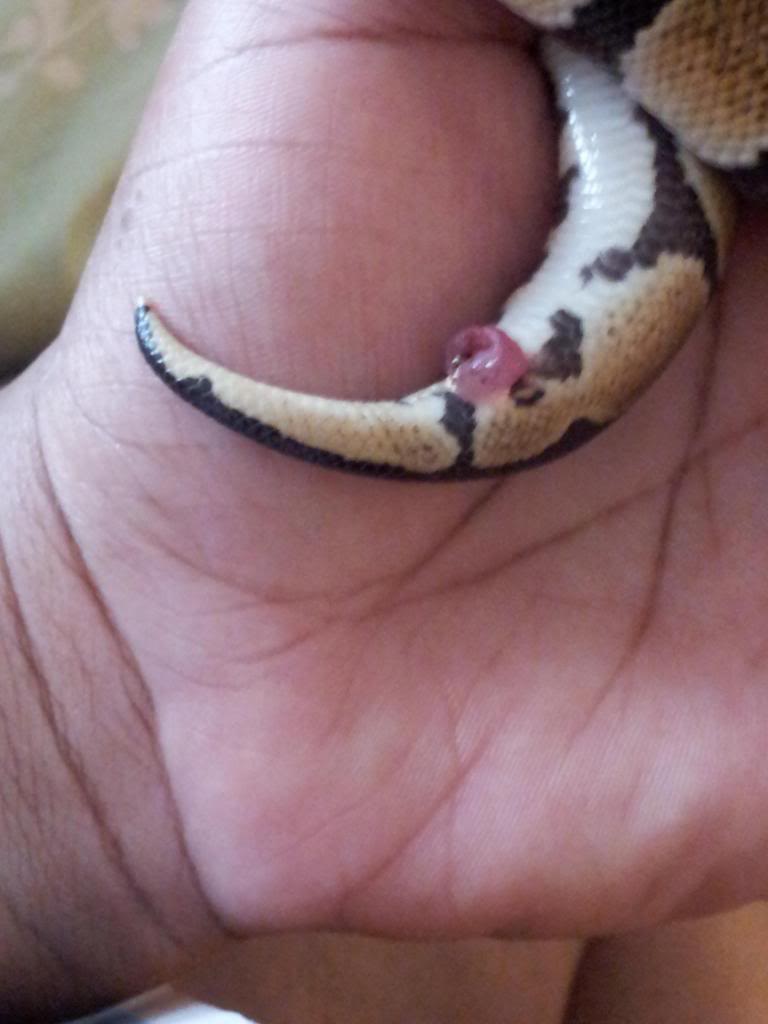
The most reliable way to sex a snake is to look for the presence of hemipenes. Hemipenes are a pair of reproductive organs located at the base of a male snake’s tail. When the male is ready to mate, one or both of the organs will protrude. A visual inspection can confirm the presence of hemipenes and confirm that the snake is male.
Tail Shape
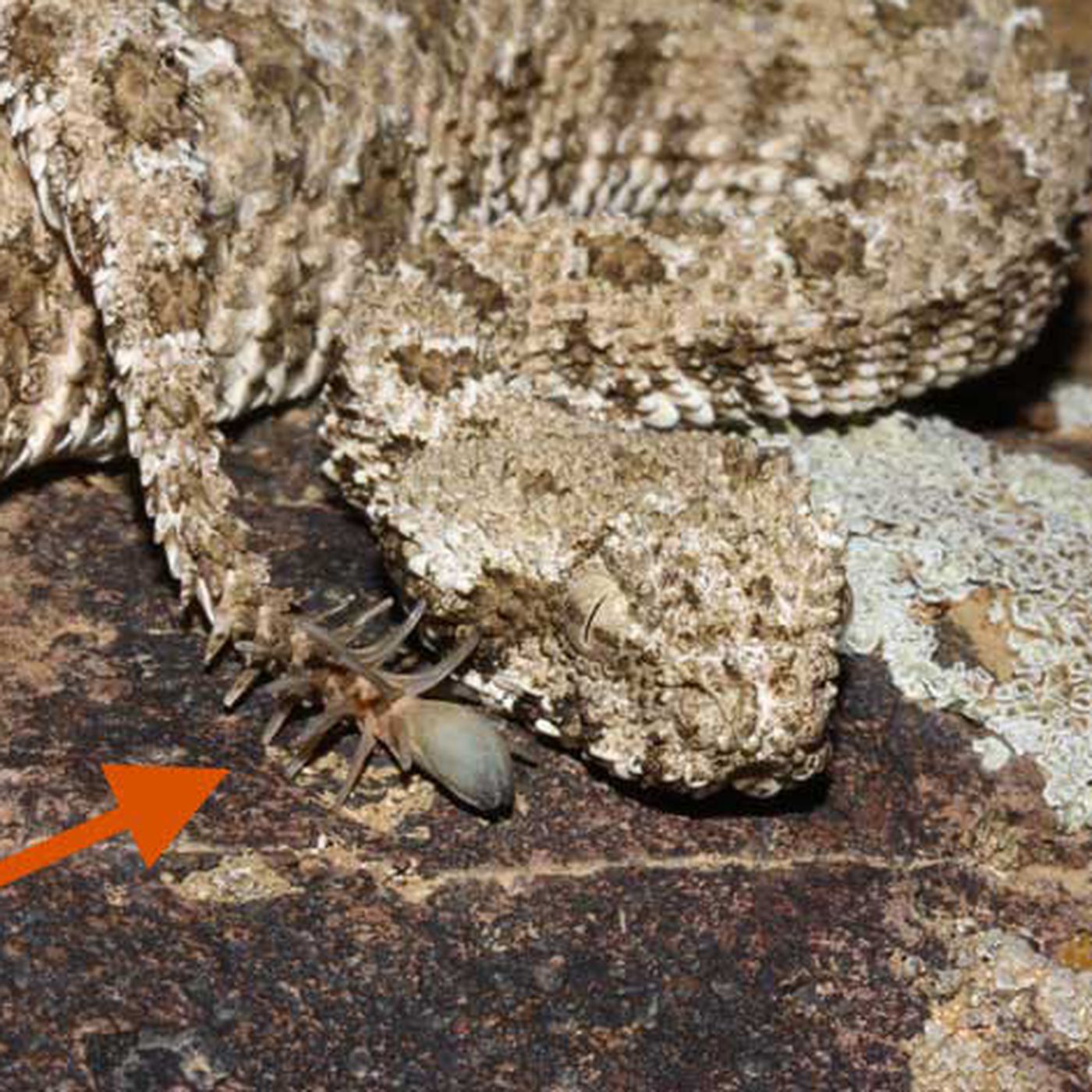
Male snakes tend to have thicker and longer tails than female snakes. This is because the male’s tail contains the reproductive organs, and is therefore more developed than the female’s. This can be used to differentiate the sexes when visual inspection for hemipenes is not possible.
Behavior

Males are more likely to be territorial and aggressive than females. They will often display certain behaviors when competing with other males for a mate. These behaviors include head-bobbing, tongue-flicking, and strike-posturing. Females, on the other hand, tend to be more docile and less aggressive.
Practical Tips for Sexing Snakes

To sex a snake, look for the presence of hemipenes, or male reproductive organs. Hemipenes are located at the base of the tail and can be seen as two small bulges. Males may also have longer, thicker tails than females.
Another way to sex snakes is to look at the cloacal area, which is a small vent near the base of the tail. In males, the cloaca is further away from the tail than in females.
In some species of snakes, the male’s vent will be slightly larger than the female’s. Additionally, males may have a more curved vent, while females may have a straighter vent.
To ensure an accurate sex identification, it may be necessary to palpate the snake. This is done by carefully inserting a finger into the vent and feeling for the presence of hemipenes.
For some species of snakes, additional methods may be necessary to identify the sex. These methods may include DNA testing, or looking at the size and coloration of the snake.
When sexing snakes, it is important to use caution and handle the snake gently. Sexing a snake should only be done by an experienced herpetologist or reptile veterinarian.
Common Snake Species and Their Sexing Methods
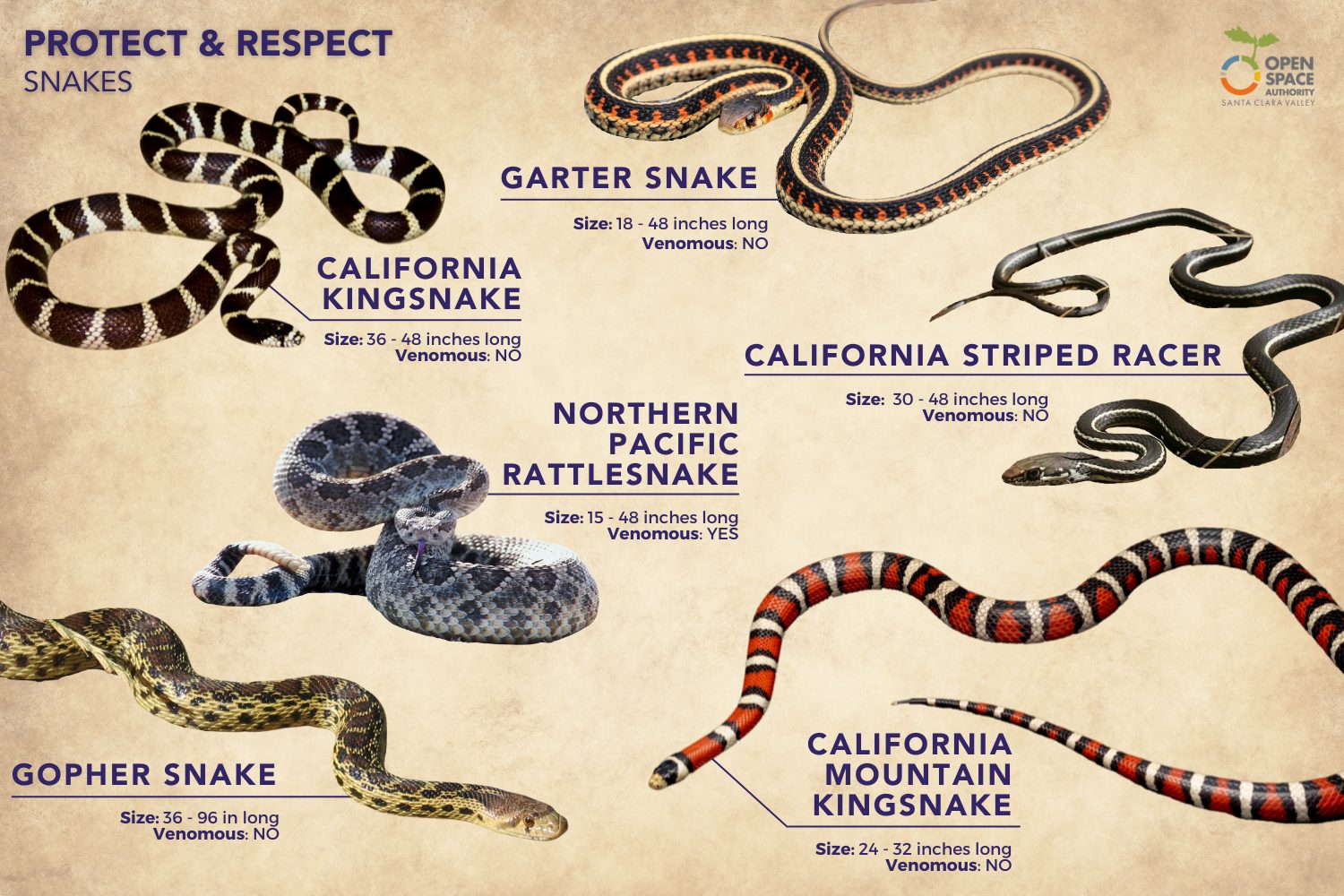
| Snake Species | Sexing Method |
|---|---|
| Ball Python | Probing or Visual |
| Corn Snake | Probing or Visual |
| Reticulated Python | Probing |
| King Snake | Probing or Visual |
| Gopher Snake | Visual |
| Green Tree Python | Visual |
| Carpet Python | Probing |
| Burmese Python | Probing |
| Hognose Snake | Visual |
| Garter Snake | Visual |
| Ratsnake | Probing or Visual |
The most common methods used to sex snakes are visual and probing. Visual methods involve examining the snake’s body shape and size, while probing involves inserting a metal probe into the cloaca of the snake to feel for the presence of the hemipenes, or reproductive organs. Snake species vary in which method is preferred or most accurate. The table above summarizes the most common snake species, and the preferred sexing method for each species. Ball pythons and corn snakes, for example, can be sexed by either visual or probing methods, while other species such as Gopher Snakes must be visually examined. It is important to note that not all species can be reliably sexed by either method, and it is best to consult a herpetologist or experienced reptile keeper for assistance with properly sexing a snake.
1 Ball Pythons
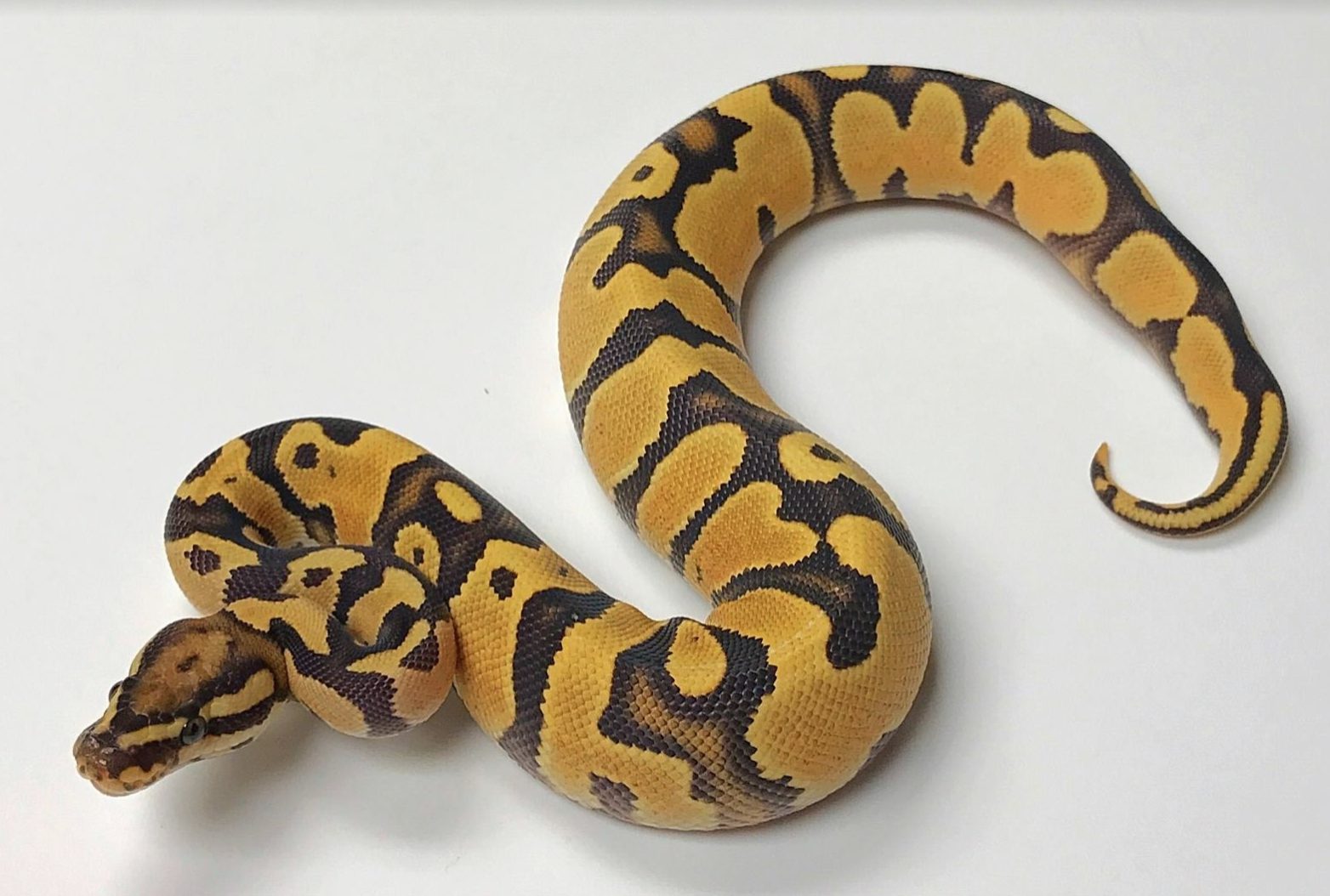
- Look for physical differences such as size and shape of the head, spurs and cloaca. Males tend to have larger heads, spurs and cloaca.
- Investigate the vent. Males will have two small protrusions, while females will have one.
- Gently probe the snake’s vent. If a lump is present, the snake is female. If a depression is present, the snake is male.
2 Corn Snakes
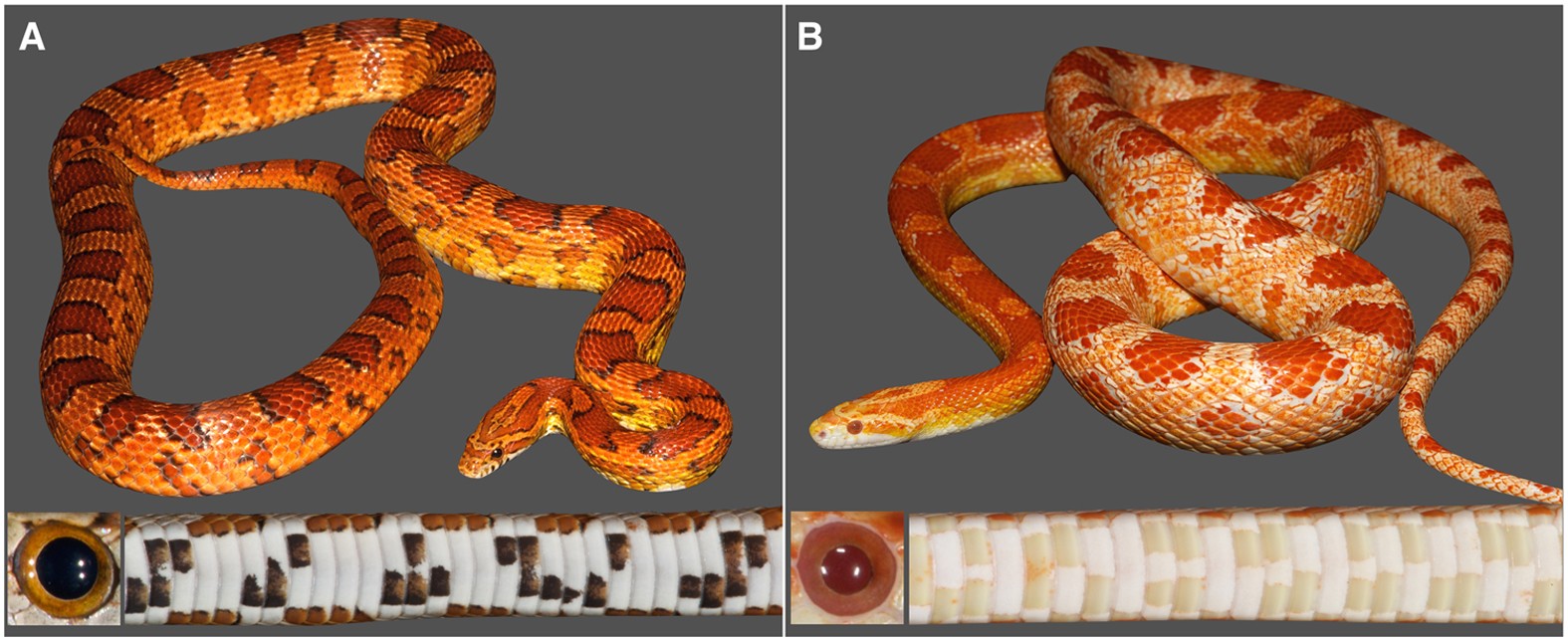
Corn snakes remain the most popular pet snake species, and they are easy to identify, sex and care for. To determine the sex of a corn snake, look for the presence of hemipenes, the male reproductive organs. These organs are located on the underside of the tail, closer to the vent. Male corn snakes typically have two hemi-penes, and females have one. Furthermore, males tend to have a wider tail base than females. This enables them to store more energy in the form of fat, which is necessary for reproduction. Finally, males can often be distinguished from females by their behavior. Males will often display courtship behavior towards females, characterized by rubbing and ‘chirping’.
3 Rat Snakes
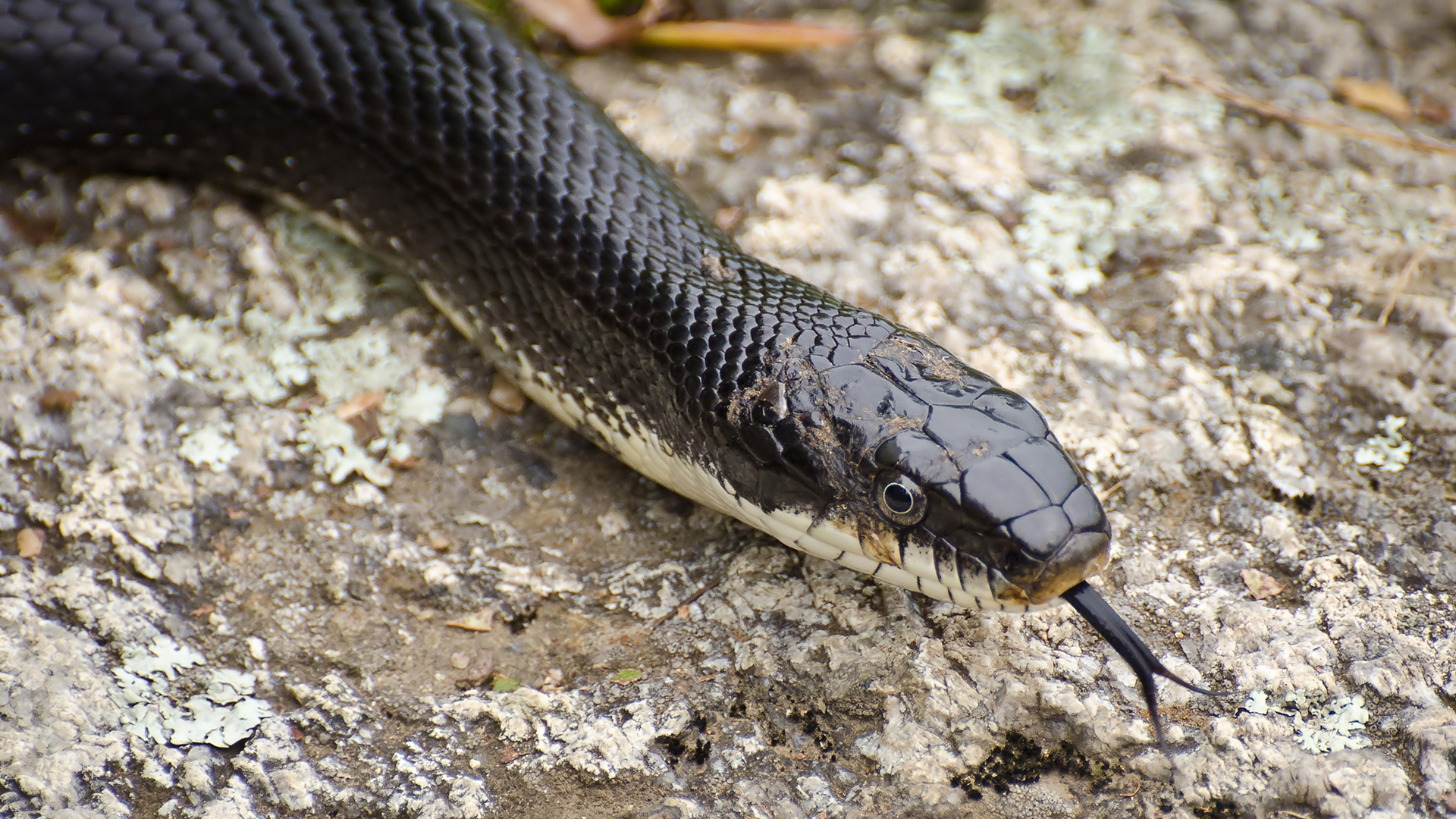
| Snake | Sex Determination Method |
|---|---|
| Norwegian Rat Snake | Observe the shape of the tail. Males have a longer, tapered tail, while the females have a thicker, stouter tail. |
| Gray Rat Snake | Look for a bulge near the vent. Males will have a bulge located just before the tail, which is caused by enlarged hemipenes. Females will lack this bulge. |
| Black Rat Snake | Check the size of the snake. Typically males will be larger than females of the same species. |
Since all rat snakes are sexually dimorphic, the most common methods for sex determination are visual. For example, the Norwegian Rat Snake has a distinct difference in the shape of the tail between the sexes, with males having a longer, tapered tail, and the females having a thicker, stouter tail. The Gray Rat Snake can be identified by the presence of a bulge near the vent, which is caused by enlarged hemipenes in males. Females will lack this bulge. Lastly, the Black Rat Snake can be identified by size, with males typically being larger than females.
4 Gopher Snakes
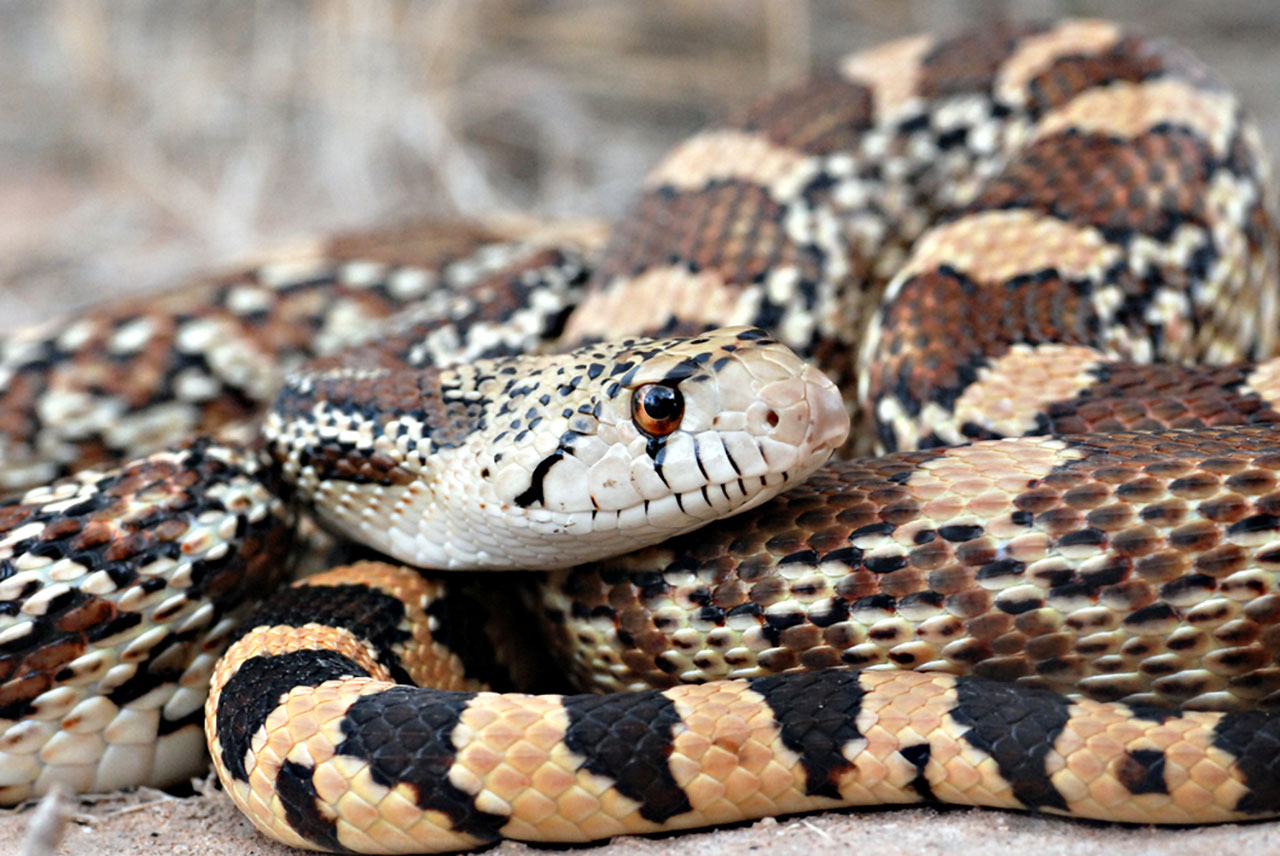
Gopher Snakes, also known as Bullsnakes, are among the easiest snakes to sex. They have a distinctive pattern of dark blotches against a lighter background and a yellow or orange stripe that runs along their back. Males are typically larger than females, with solid colors that are more vibrant and brighter. Additionally, males have a longer and thicker tail, as well as hemipenes, which are two spurs located at the base of their tail. To tell if a Gopher Snake is male or female, look for the following physical characteristics:
1. Size: Males are typically larger than females.
2. Coloration: Males have more vibrant, solid colors.
3. Tail: Males have a longer, thicker tail.
4. Hemipenes: Males have two spurs located at the base of their tail.
How to Sex a Snake With Probing
Probing is a commonly used method for sexing snakes. It is a simple method, though it does require some practice and experience to be done properly.
| Step | Instructions |
|---|---|
| 1 | Gently restrain the snake by firmly holding its body with one hand, while using the other to hold its tail. |
| 2 | Gently insert a probe, such as a blunt-tipped needle, into the snake’s cloaca, which is the opening at the base of the tail. |
| 3 | Slowly push the probe into the cloaca until it is at least one-third of its length. It is important to be gentle when inserting the probe, as too much pressure can cause harm to the snake. |
| 4 | Observe the probe as it is inserted. If the probe stops at a certain point and does not move further, the snake is male. On the other hand, if the probe can be pushed further, the snake is female. |
| 5 | Remove the probe and release the snake. |
Probing is not a foolproof method, and experienced herpetologists may have a higher accuracy rate in determining the sex of snakes. In addition, probing should only be done by experienced professionals.
Risks of Probing
- Physical Injury – Probing can cause physical damage to the snake if done incorrectly.
- Stress – Probing can be a stressful experience for the snake and can cause it to become aggressive or stressed out.
- Inaccuracy – Probing is not always an accurate way of determining the sex of the snake and may not provide an accurate result.
- Invasive – Probing is an invasive process that can cause discomfort and distress to the snake.
Frequently Asked Questions
What methods can I use to tell if a snake is male or female?
The two main methods to determine the sex of a snake are by inspecting its physical characteristics or by performing a hemipenal probing. Physical characteristics such as tail length and thickness, coloration and shape of the head can provide clues as to the sex of the snake. Hemipenal probing involves inserting a probe into the snake’s cloaca to determine the presence or absence of hemipenes. This should only be done by a trained professional.
How can I sex a snake visually?
In most species of snakes, sexing visually is possible by looking for physical differences between males and females. Male snakes tend to have longer tails than females, which contain the reproductive organs. Male snakes may also have thicker, wider tails than females. In some species, males have spurs on their vent. Other differences include size, coloration, and the presence of hemipenes in males. It is best to consult a herpetologist or veterinarian to accurately sex a snake.
How do I sex a snake without probing?
In some species of snakes, the physical differences between males and females are quite subtle and difficult to distinguish without a thorough examination, including probing. However, there are some ways to determine the gender of a snake without probing. Many snake species have distinct tail shapes, with males typically having longer, narrower tails, while females tend to have shorter, thicker tails. Snakes can also be sexed by their coloration, as males tend to be brighter and more colorful than females. In addition, males may have a row of enlarged scales on the underside of their tail, called subcaudal scales.
What are the differences between male and female corn snakes?
Male corn snakes have longer tails than females, and their cloaca (where the tail meets the body) is located further from the vent (where the tail meets the body). Male corn snakes typically have thicker tails and their scales tend to be larger than those of females. Male corn snakes also tend to have brighter colors than females. Additionally, male corn snakes will often exhibit a bulge in the midsection, which is an indication of the presence of hemipenes (reproductive organs).
Is there an easy way to tell a male snake from a female?
In most cases, identifying the sex of a snake is not an easy task. Generally, the most reliable method of determining gender is to examine the snake’s cloaca, which is the opening at the base of the tail for excretory and reproductive organs. In adult males, the cloaca is often further away from the body than that of a female, and the tail might appear thicker. Other methods include the probe test or venting. In some species, males may have spurs near the vent.
Conclusion
The best way to tell if a snake is male or female is to consult with a veterinarian who specializes in reptiles. In addition to physical examination, they can use other methods such as hormone testing and genetic testing. It is important to remember that the gender of a snake cannot be determined accurately without the help of a trained professional, so it is important to seek out a qualified veterinarian if you have any doubts.
